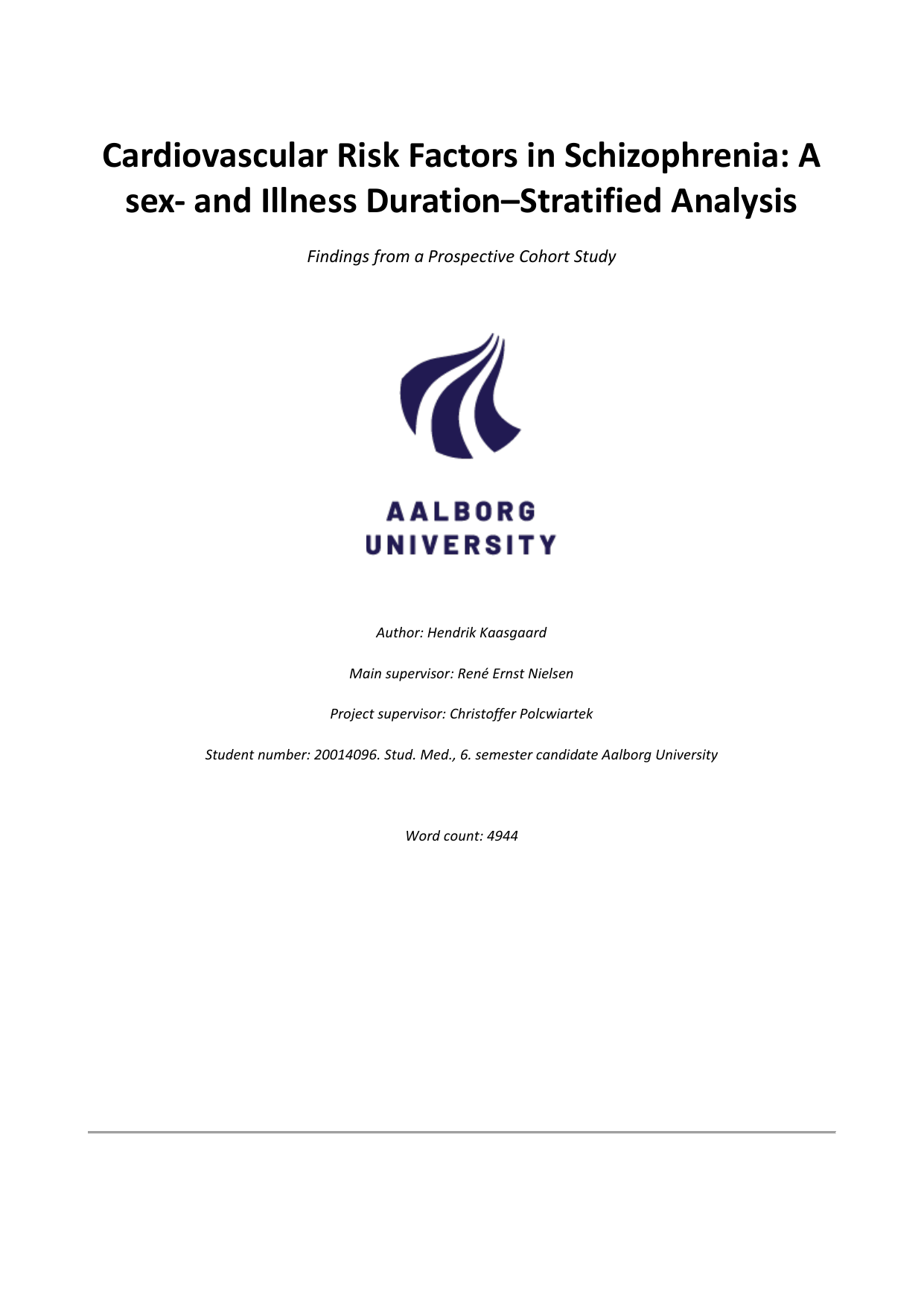
Cardiovascular Risk Factors in Schizophrenia: A sex and Illness Duration Stratified Analysis
Author
Term
5. Term (Master thesis)
Education
Publication year
2025
Submitted on
2025-04-04
Pages
16
Abstract
Schizophrenia is linked to a 15–20‐year reduction in life expectancy compared with the general population, primarily due to increased cardiovascular morbidity and mortality [1, 2]. In this prospective cohort study of 235 patients with schizophrenia or schizoaffective disorder recruited at Aalborg University Hospital (Region North, Denmark), we evaluated baseline cardiovascular risk profiles, medication patterns, and psychiatric symptom severity, stratifying patients by sex and time duration since diagnosis. The cohort consisted of 103 women and 132 men, further subdivided into an early-stage group (diagnosis <2 years, n = 70) and a chronic group (diagnosis ≥10 years, n = 165). In the overall cohort, men exhibited significantly higher cardiovascular risk markers compared with women. Men had a median systolic blood pressure of 131 mmHg versus 119.5 mmHg in women (p < 0.0001) and diastolic pressure of 84 mmHg versus 81 mmHg (p = 0.0023). Men also showed a less favorable lipid profile, with median total cholesterol at 4.8 mmol/L versus 4.4 mmol/L in women (p = 0.0021), LDL cholesterol at 2.6 mmol/L versus 2.3 mmol/L (p = 0.0012), and triglycerides at 2.0 mmol/L versus 1.5 mmol/L (p = 0.0033), while HDL cholesterol was significantly lower in men (1.1 mmol/L vs. 1.3 mmol/L, p < 0.0001). In the early-stage subgroup, men (median age 26.5 years) were significantly older than women (median age 21.5 years, p < 0.0001) and demonstrated near-universal antipsychotic use (97.4% vs. 78.1%, p = 0.0320). Early-stage men had higher systolic blood pressure (median 130 mmHg vs. 113 mmHg, p < 0.0001) and a more adverse lipid profile with lower HDL (median 1.0 mmol/L vs. 1.2 mmol/L, p = 0.0295) and higher triglycerides (median 2.4 mmol/L vs. 1.6 mmol/L, p = 0.0430). In the chronic subgroup, despite women being significantly older (median 53 vs. 48 years, p = 0.0032), men maintained significantly higher blood pressures and less favorable lipid profiles. Women in this group were more frequently treated with antidepressants, particularly SSRIs (49.3% vs. 31.9%, p = 0.0356). Psychometric assessments (PANSS, CGI, GAF) revealed no significant gender differences, suggesting that the cardiovascular disparities are independent of psychosis severity. These findings indicate that men with schizophrenia possess a higher cardiovascular risk profile from early stages, underscoring the need for early, gender-specific cardiovascular screening and interventions. Longitudinal follow-up every three years will further clarify the impact on long-term outcomes and mortality.
Documents
